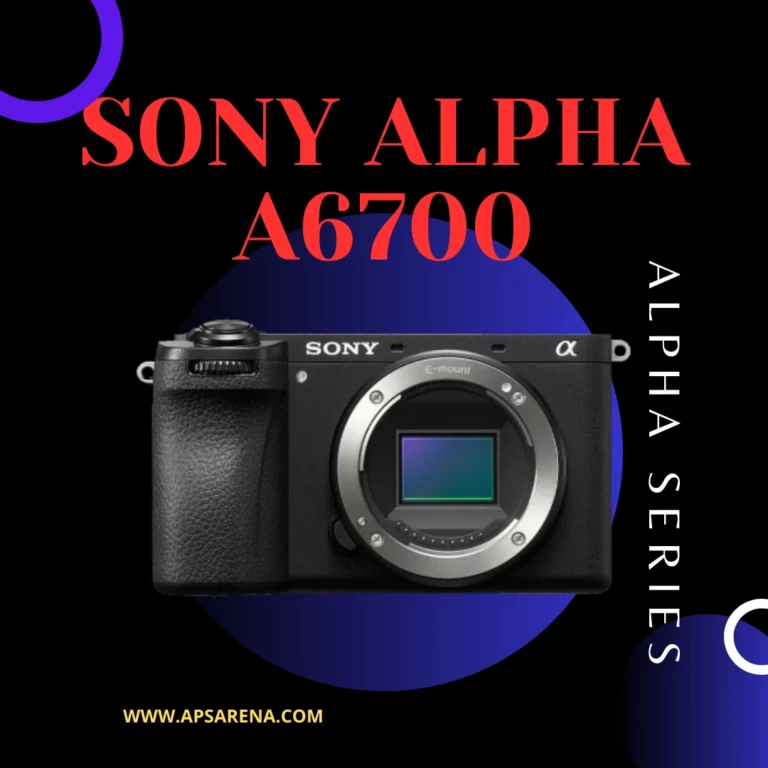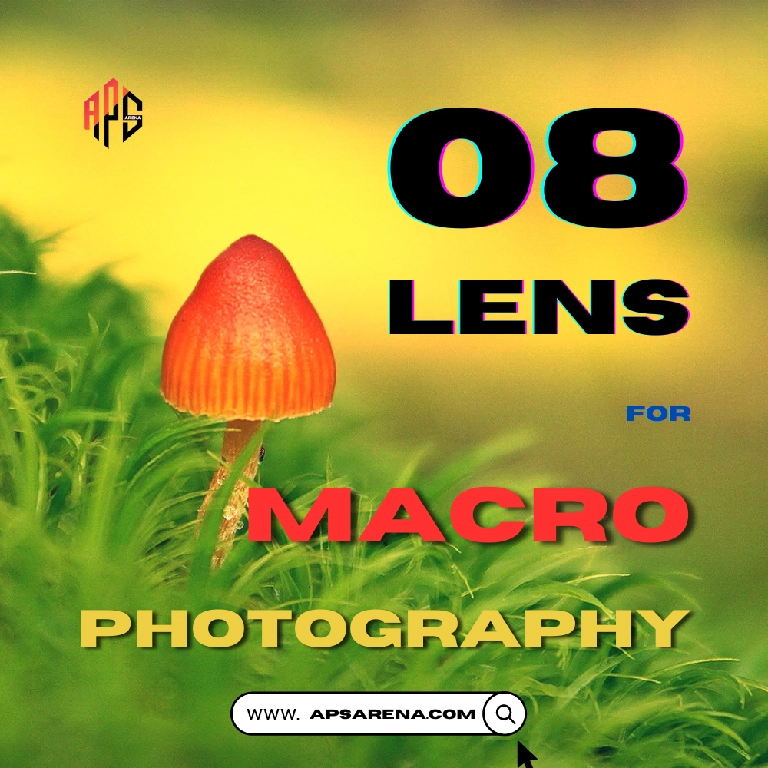
Macro photography offers a captivating way to capture intricate details and transform ordinary subjects into extraordinary works of art. Choosing the right lens for macro photography can be daunting, given the numerous options available, each with its own features. However, regardless of your skill level or budget, there is undoubtedly a macro lens that suits your needs. This article presents the top 08 best Lenses for Macro Photography, catering to various budgets, subject preferences, and major camera brands, including DSLR and mirrorless options.
Quick Jump
Nikon AF-S 40mm f/2.8G Micro
The Nikon AF-S 40mm f/2.8G Micro lens is a compact and lightweight macro lens designed for Nikon’s F-mount DSLR cameras. The Nikon AF-S 40mm f/2.8G Micro lens is specifically designed for Nikon’s F-mount DSLR cameras. It offers a 40mm focal length suitable for both Macro and general photography. The lens features a maximum aperture of f/2.8, allowing for good low-light performance and shallow depth-of-field effects. It incorporates Nikon’s Silent Wave Motor (SWM) autofocus system, providing fast, accurate, and virtually silent autofocus performance. The lens has a close focusing distance of 0.163m (6.4 inches) and a 1:1 reproduction ratio, enabling actual macro photography to capture fine details. It also includes Nikon’s Super Integrated Coating to minimize flare and ghosting, ensuring high contrast and accurate colors.
Pros:
• Compact and lightweight: The Nikon AF-S 40mm f/2.8G Micro lens is highly portable, making it easy to carry and handle. It is an excellent option for photographers who value mobility and want a lens that won’t weigh them down.
• Versatility: With its 40mm focal length, the lens is not only suitable for macro photography but also performs well for everyday photography, including portraits, landscapes, and more.
• High-quality optics: The lens delivers excellent image quality with sharpness, clarity, and good color reproduction. The Super Integrated Coating helps minimize lens flare and ghosting, improving contrast and color accuracy.
• Silent Wave Motor (SWM): The autofocus system utilizes Nikon’s Silent Wave Motor, providing fast and precise autofocus performance. It is virtually silent, making it suitable for photography and video recording.
• Affordable price: The Nikon AF-S 40mm f/2.8G Micro lens is relatively affordable compared to some other macro lenses on the market, making it a budget-friendly option for photographers interested in macro photography.
Cons:
• Fixed focal length: The lens has a fixed focal length of 40mm, which means it lacks the flexibility of zoom lenses. Users will need to physically move closer or farther from the subject to adjust the framing.
• Limited working distance: Due to the 40mm focal length, the lens requires the photographer to get relatively close to the subject for macro shots. This might be challenging when photographing skittish or small subjects that could be easily disturbed.
• Compatibility: The Nikon AF-S 40mm f/2.8G Micro lens is designed for Nikon F-mount DSLR cameras. It may require an adapter for Nikon’s mirrorless Z-mount cameras.

The Nikon AF-S 40mm f/2.8G Micro lens is a compact and versatile option for macro photography and general-purpose shooting. Its lightweight design, affordability, and good image quality make it a popular choice among photographers exploring macro photography without breaking the bank. However, the fixed focal length and limited working distance might be limitations for specific macro-shooting scenarios.
Canon EF-S 35mm f/2.8 Macro IS STM
The Canon EF-S 35mm f/2.8 Macro IS STM lens is an excellent choice for macro photography, especially for beginners or those on a budget. The Canon EF-S 35mm f/2.8 Macro IS STM is explicitly designed for Canon APS-C cameras, offering a 35mm focal length equivalent of approximately 56mm due to the 1.6x crop factor. It features a built-in Macro Lite LED ring light around the front element, providing additional illumination for close-up subjects. The lens incorporates an optical image stabilization system to reduce camera shake, resulting in sharper images. It uses a Stepping Motor (STM) for smooth and quiet autofocus performance, making it suitable for still photography and video recording. A maximum aperture of f/2.8 allows for good low-light performance and shallow depth-of-field effects.
Pros:
• Affordable: The Canon EF-S 35mm f/2.8 Macro IS STM is priced competitively, making it an accessible option for those starting in macro photography or on a tight budget.
• Built-in ring light: The lens features a unique built-in Macro Lite LED ring light, providing additional illumination for close-up subjects. This eliminates the need for external lighting setups in certain situations.
• Optical stabilization: Optical image stabilization helps minimize camera shake, enabling sharper images when shooting handheld or in low-light conditions.
• Compact and lightweight: The lens is compact and lightweight, making it portable and easy for outdoor photography or travel.
• Versatility: While primarily designed for macro photography, the 35mm focal length is also suitable for general-purpose photography, including portraits and street photography.
Cons:
• Optical performance: While the lens delivers decent optical performance, it may not match the image quality of more expensive macro lenses. This is especially noticeable at wider apertures, where softness or chromatic aberration can occur.
• Plastic construction: The lens is plastic, which may not feel as robust or durable as higher-end lenses with metal build quality.
• Lack of weather sealing: The lens does not have weather sealing, so caution should be exercised in challenging weather conditions or dusty environments.
• Limited to APS-C cameras: The EF-S mount restricts the lens’s compatibility to Canon APS-C sensor cameras only. It is not suitable for full-frame cameras.
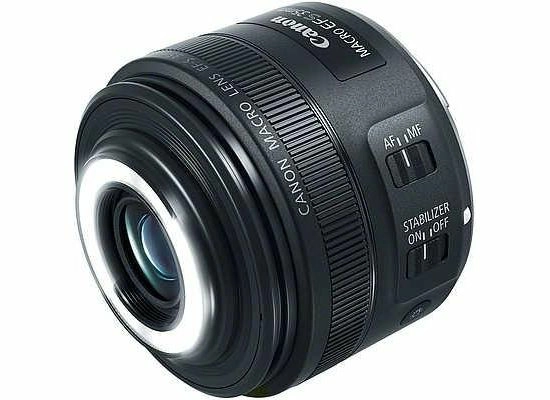
Overall, the Canon EF-S 35mm f/2.8 Macro IS STM offers a budget-friendly option for macro photography, particularly for beginners. Its built-in ring light, optical stabilization, and compact design make it a versatile lens for capturing close-up details. However, higher-end macro lenses may be better for users seeking the utmost image quality or compatibility with full-frame cameras.
Nikon Z MC 105mm f/2.8 VR S
The Nikon Z MC 105mm f/2.8 VR S lens is a high-quality macro lens designed for Nikon’s Z-mount mirrorless cameras. The Nikon Z MC 105mm f/2.8 VR S lens is specifically designed for Nikon’s Z-mount mirrorless cameras. It offers a versatile 105mm focal length, ideal for macro photography and other genres like portraiture and landscape. The lens features a maximum aperture of f/2.8, allowing for excellent low-light performance and beautiful background blur. It incorporates Nikon’s Multi-Focus System with a floating lens element design for improved close-up performance. The lens includes Nikon’s Vibration Reduction (VR) technology, providing up to 4.5 stops of image stabilization to reduce camera shake. It also features a customizable control ring and an OLED information panel for easy adjustment and viewing of settings. The lens construction consists of high-quality optics with nanocrystalline and ARNEO coatings to reduce flare and ghosting and enhance image clarity.
Pros:
• Outstanding image quality: The Nikon Z MC 105mm f/2.8 VR S lens delivers exceptional quality with sharpness, clarity, and accurate colors. The lens construction and coatings help minimize aberrations, flare, and ghosting, producing excellent optical performance.
• Versatile focal length: The 105mm focal length provides a comfortable working distance for macro photography, allowing you to capture fine details while maintaining sufficient space from the subject. It is also well-suited for portraiture and other genres, offering a flattering perspective and pleasing background blur.
• Vibration Reduction (VR): The built-in VR technology compensates for camera shake, allowing you to shoot handheld at slower shutter speeds and still achieve sharp images. This feature is especially beneficial in macro photography, where stability is crucial, and in low-light conditions.
• Multi-Focus System: The lens incorporates a floating lens element design and a Multi-Focus System that ensures high-performance autofocus and excellent close-up capabilities. It enables accurate and precise focusing, even when capturing subjects at close distances.
• Customizable control ring and OLED information panel: The lens includes a customizable control ring that allows you to assign various functions, such as aperture control, exposure compensation, or manual focusing. The OLED information panel displays essential settings and shooting information, providing quick access and easy monitoring.
Cons:
• Price: The Nikon Z MC 105mm f/2.8 VR S lens has a premium price tag. It may not be budget-friendly for all photographers.
• Weight and size: While the lens is well-built and durable, it is relatively large and heavy compared to other macro lenses. This might affect portability and be a consideration for photographers looking for a more compact setup.
• Limited compatibility: The Nikon Z MC 105mm f/2.8 VR S lens is designed specifically for Nikon’s Z-mount mirrorless cameras. It may require an adapter for Nikon’s F-mount DSLR cameras.
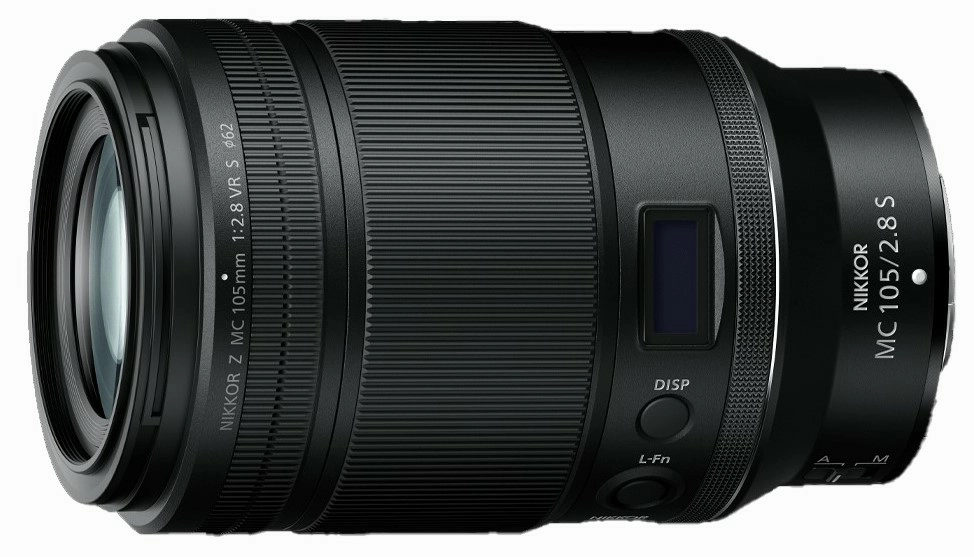
The Nikon Z MC 105mm f/2.8 VR S lens is a top-tier macro lens with exceptional image quality, versatile focal length, and advanced features like VR and a Multi-Focus System. It is well-suited for macro photography enthusiasts and photographers interested in portraiture and other genres. However, the lens’s higher price point and size should be considered, along with its compatibility limitations for Nikon’s F-mount DSLR cameras.
Canon RF 100mm f/2.8L Macro IS USM
The Canon RF 100mm f/2.8L Macro IS USM lens is a high-quality macro lens designed for Canon’s full-frame mirrorless RF mount cameras. The Canon RF 100mm f/2.8L Macro IS USM lens is specifically designed for Canon’s RF mount, making it compatible with their full-frame mirrorless cameras. It offers a 100mm focal length, ideal for macro photography, allowing you to capture intricate details from a comfortable working distance. The lens features a maximum aperture of f/2.8, enabling good low-light performance and shallow depth-of-field effects. It incorporates a Hybrid Image Stabilization system, combining optical and in-body stabilization for up to 5 stops of image stabilization, minimizing camera shake and producing sharper images. The lens utilizes a fast and accurate Ultra Sonic Motor (USM) autofocus system, providing quick and quiet focusing performance. It also includes customizable control rings for adjusting settings such as aperture, ISO, and exposure compensation.
Pros:
• Superb image quality: The Canon RF 100mm f/2.8L Macro IS USM lens delivers exceptional image quality with sharpness, clarity, and excellent color rendition. It offers edge-to-edge sharpness and minimal distortion, ensuring high-quality macro photographs.
• Versatility: While primarily designed for macro photography, the 100mm focal length is suitable for other genres, such as portraiture, providing a flattering perspective and background separation.
• Hybrid Image Stabilization: The lens incorporates a hybrid image stabilization system, combining optical and in-body stabilization. This allows for up to 5 stops of stabilization, enabling handheld shooting at slower shutter speeds and reducing the chances of blur caused by camera shake.
• Fast and accurate autofocus: The Ultra Sonic Motor (USM) autofocus system ensures quick, precise, and virtually silent autofocus performance, making it suitable for both still photography and video recording.
• Weather-sealed construction: The lens features durable and weather-sealed construction, protecting it against dust and moisture. This makes it well-suited for outdoor and challenging shooting conditions.
Cons:
• Price: The Canon RF 100mm f/2.8L Macro IS USM lens falls into the high-end price range, which may be a significant investment for some photographers.
• Weight and size: An L-series lens is larger and heavier than non-professional lenses. This might be a consideration for photographers seeking a more compact and lightweight setup.
• Limited compatibility: An RF mount lens is only compatible with Canon’s full-frame mirrorless cameras. It cannot be used directly on Canon DSLRs or cameras with other lens mounts without an adapter.

Overall, the Canon RF 100mm f/2.8L Macro IS USM lens is a top-quality macro lens that excels in image quality, versatility, and performance. Its Hybrid Image Stabilization, fast autofocus, and weather-sealed construction make it a reliable tool for professional macro photographers. However, the price and size of the lens might be factors to consider for photographers on a budget or looking for a more compact setup.
Sony FE 90mm f/2.8 Macro G OSS
The Sony FE 90mm f/2.8 Macro G OSS lens is a high-quality macro lens designed for Sony’s full-frame E-mount mirrorless cameras. The Sony FE 90mm f/2.8 Macro G OSS lens is specifically designed for Sony’s full-frame E-mount mirrorless cameras, but it can also be used on APS-C models, where it provides an equivalent focal length of 135mm. This lens is dedicated to macro photography and offers a versatile 90mm focal length, which allows for a comfortable working distance from the subject. Its maximum aperture of f/2.8 provides excellent low-light performance and a beautiful background blur. The lens incorporates Sony’s Optical SteadyShot (OSS) image stabilization technology, which helps to minimize camera shake and enables handheld shooting at slower shutter speeds. It also has a built-in focus limiter switch for faster autofocus performance and a customizable focus hold button. The lens construction consists of high-quality optics with a Nano AR coating to reduce flare and ghosting and ensure optimal image quality.
Pros:
• Excellent image quality: The Sony FE 90mm f/2.8 Macro G OSS lens delivers outstanding image quality with exceptional sharpness, clarity, and accurate colors. The lens design and coatings help minimize aberrations, flare, and ghosting, producing superb optical performance.
• Versatile focal length: The 90mm focal length provides a comfortable working distance for macro photography, allowing you to capture fine details while maintaining sufficient distance from the subject. It is also suitable for other genres like portraiture, where the longer focal length can provide a flattering perspective and background compression.
• Optical SteadyShot (OSS): The built-in image stabilization technology compensates for camera shake, allowing you to shoot handheld at slower shutter speeds and still achieve sharp images. This feature is particularly beneficial in macro photography, where stability is crucial, and in low-light conditions.
• Fast and accurate autofocus: The lens utilizes a Direct Drive Super Sonic Wave Motor (DDSSM) for fast, precise, and quiet autofocus performance. The focus limiter switch lets you set a specific focus range, speeding up the autofocus operation for better responsiveness.
• Build quality and handling: The lens is well-built and features a dust- and moisture-resistant design, making it suitable for use in various environments. The customizable focus hold button allows you to assign different functions, such as activating eye autofocus or locking focus.
Cons:
• Price: The Sony FE 90mm f/2.8 Macro G OSS lens has a premium price tag. It may not be budget-friendly for all photographers.
• Size and weight: The lens is relatively large and heavy compared to other macro lenses. This might affect portability, especially for photographers who prefer a more compact setup.
• No built-in focus motor for non-Sony cameras: While the lens can be used with Sony’s APS-C E-mount cameras, it does not have a built-in focus motor. As a result, autofocus functionality may be limited or unavailable when used with certain third-party lens adapters on non-Sony cameras.

The Sony FE 90mm f/2.8 Macro G OSS lens is a top-tier macro lens with exceptional image quality, versatile focal length, and advanced features like OSS and fast autofocus. It is well-suited for macro photography enthusiasts and photographers interested in portraiture and other genres. However, the lens’s higher price point and size should be considered, along with the limited autofocus compatibility with non-Sony cameras when using certain adapters.
Sigma 105mm f/2.8 DG DN Macro Art
The Sigma 105mm f/2.8 DG DN Macro Art lens is a high-quality macro lens designed for full-frame mirrorless cameras with L-mount and Sony E-mount. The Sigma 105mm f/2.8 DG DN Macro Art lens is a dedicated macro lens that delivers exceptional optical performance. It is compatible with full-frame mirrorless cameras with L-mount and Sony E-mount, making it suitable for various cameras, including those from Sigma, Panasonic, Leica, and Sony. The lens offers a 105mm focal length, providing a comfortable working distance for macro photography and also allowing for versatile use in other genres, such as portraiture. It features a maximum aperture of f/2.8, enabling excellent low-light performance and depth-of-field control. The lens utilizes a high-quality optical design with multiple unique elements to minimize aberrations and ensure superior image quality. It also incorporates a Super Multi-Layer Coating to reduce flare and ghosting.
Pros:
• Outstanding image quality: The Sigma 105mm f/2.8 DG DN Macro Art lens is known for its exceptional quality. It produces sharp, detailed images with excellent contrast and color accuracy. The lens design, including specialized elements, helps minimize chromatic aberrations, distortion, and other optical imperfections.
• Macro capabilities: With its 1:1 magnification ratio, the lens allows you to capture intricate details and produce stunning macro photographs. The 105mm focal length provides a comfortable working distance, making it suitable for photographing small subjects without disturbing them.
• Versatility: While primarily designed for macro photography, the 105mm focal length also makes the lens versatile for other applications, such as portraiture and general telephoto shooting. It provides a flattering perspective and allows for beautiful background separation.
• Weather-sealed construction: The lens features a design that provides dust and splash resistance. This makes it suitable for various environmental conditions, enhancing its durability and reliability.
• Smooth autofocus and manual focus operation: The lens incorporates a quiet and precise autofocus system, ensuring accurate focusing in various shooting situations. Additionally, it offers a manual focus override for more precise control when needed.
Cons:
• Weight and size: The Sigma 105mm f/2.8 DG DN Macro Art lens is relatively large and heavy compared to other macro lenses. While this might not be an issue for all photographers, it can impact portability, especially for those who prefer a more lightweight setup.
• Autofocus speed: While the lens offers smooth and precise autofocus performance, it may not be the fastest lens in terms of autofocus speed. Other lenses may provide quicker autofocus capabilities for fast-moving subjects or critical action photography.
• No optical stabilization: Unlike other macro lenses, the Sigma 105mm f/2.8 DG DN Macro Art lens does not feature built-in optical image stabilization. This means that relying on a stable shooting technique or using a tripod may be necessary to avoid camera shaking when shooting at slower shutter speeds.

The Sigma 105mm f/2.8 DG DN Macro Art lens is a high-quality macro lens that delivers exceptional image quality and versatile performance. It is well-suited for macro photography enthusiasts who prioritize image quality and want the flexibility to explore other genres. However, photographers should consider the lens’s size, weight, potential autofocus speed limitations, and the lack of built-in optical stabilization for handheld shooting.
Fujifilm XF 80mm f/2.8 R LM OIS WR
The Fujifilm XF 80mm f/2.8 R LM OIS WR lens is a dedicated macro lens for Fujifilm X-series mirrorless cameras. The Fujifilm XF 80mm f/2.8 R LM OIS WR lens is a versatile macro lens for Fujifilm X-series mirrorless cameras. It provides a focal length equivalent to 122mm (in 35mm format) and offers a 1:1 magnification ratio, making it ideal for close-up photography and capturing intricate details. The lens features a maximum aperture of f/2.8, enabling excellent low-light performance and shallow depth-of-field control. It incorporates advanced optical technologies and weather-resistant construction, making it suitable for various shooting conditions. The lens also includes visual image stabilization to minimize camera shake and enhance image stability.
Pros:
• Excellent image quality: The Fujifilm XF 80mm f/2.8 R LM OIS WR lens delivers superb quality. It utilizes a high-performance optical design with 16 elements in 12 groups, including one aspherical element, one Super ED element, and three ED elements. This design minimizes various aberrations, distortion, and color fringing, resulting in sharp, detailed images with excellent contrast and color accuracy.
• Versatility: While primarily designed for macro photography, the 80mm focal length provides a versatile working distance, making the lens suitable for other genres, including portraiture and telephoto shooting. It offers a flattering perspective and smooth background blur.
• Optical image stabilization: The lens incorporates optical image stabilization (OIS), which helps minimize the effects of camera shake. This feature is especially useful when shooting handheld or in low-light conditions, as it allows for sharper images and reduces the reliance on high ISO settings.
• Weather-resistant construction: The lens features robust weather-resistant construction, protecting it against dust and moisture. This makes it suitable for outdoor photography, even in challenging weather conditions.
• Quiet and fast autofocus: The lens utilizes a linear motor (LM) system, providing fast, precise, and silent autofocus performance. This is particularly beneficial when photographing delicate subjects or when discretion is required.
Cons:
• Size and weight: The Fujifilm XF 80mm f/2.8 R LM OIS WR lens is relatively large and heavy compared to other Fujifilm lenses. While this can provide a sturdy and well-balanced feel on the camera, it may be less desirable for photographers looking for a compact and lightweight setup.
• Autofocus limitations in low light: While the autofocus performance of the lens is generally excellent, it may struggle in highly low-light conditions or when focusing on low-contrast subjects. Manual focusing or additional lighting may be required for optimal results in such situations.
• Price: The Fujifilm XF 80mm f/2.8 R LM OIS WR lens is relatively expensive compared to other macro lenses in its class. This can be a limiting factor for photographers on a tighter budget.
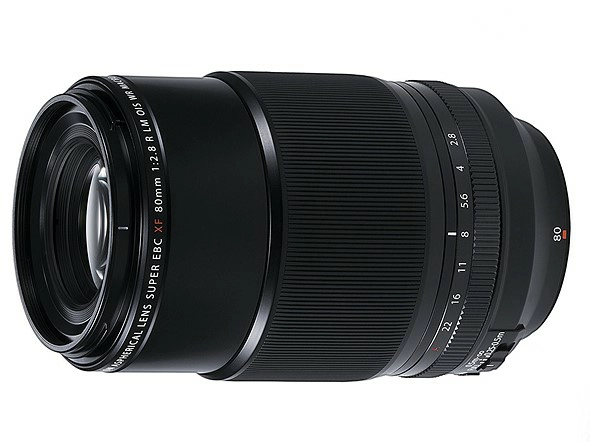
The Fujifilm XF 80mm f/2.8 R LM OIS WR lens is a high-quality macro lens with excellent image quality, versatile focal length, and weather-resistant construction. It is particularly suitable for Fujifilm X-series users who prioritize macro photography and require a lens capable of delivering sharp, detailed close-up images. However, photographers should consider the lens’s size, weight, potential autofocus limitations in low light, and the higher price point compared to some alternatives.
Olympus M.Zuiko Digital ED 60mm f/2.8 Macro
The Olympus M.Zuiko Digital ED 60mm f/2.8 Macro lens is a dedicated macro lens designed for Olympus Micro Four Thirds mirrorless cameras. The Olympus M.Zuiko Digital ED 60mm f/2.8 Macro lens is designed for macro photography, offering a focal length equivalent to 120mm (in 35mm format). It provides a 1:1 magnification ratio, allowing you to capture intricate details of small subjects. The lens features a bright maximum aperture of f/2.8, enabling excellent low-light performance and shallow depth-of-field control. It incorporates advanced optical technologies and a compact, lightweight design, making it highly portable and convenient for close-up shooting. The lens also includes a focus limiter switch and a customizable function button for enhanced usability.
Pros:
• Outstanding image quality: The Olympus 60mm f/2.8 Macro lens delivers excellent quality. It features a high-quality optical design with 13 elements in 10 groups, including extra-low dispersion (ED) and high refractive index (HR) elements. This design minimizes aberrations and ensures sharpness, clarity, and accurate color reproduction in close-up and general photography.
• Versatile focal length: With a focal length equivalent to 120mm, the lens provides a comfortable working distance for macro subjects while offering a flattering perspective for portraits and telephoto shooting. It enables you to capture stunning close-up images and doubles as a capable medium-telephoto lens.
• Compact and lightweight: The lens has a compact and lightweight design, making it easy to carry and handle. It complements the portability of Olympus Micro Four Thirds cameras, allowing for a highly portable and versatile setup.
• Dual-purpose lens: The 60mm f/2.8 Macro lens excels in macro photography and performs well for everyday shooting. Its versatile focal length and excellent optical performance suit various genres, including portraits, nature, and travel photography.
• Weather-sealed construction: The lens features a weather-sealed construction, making it resistant to dust, moisture, and splashes. This enhances its durability and allows for worry-free shooting in various weather conditions.
Cons:
• Slower autofocus: The autofocus performance of the Olympus 60mm f/2.8 Macro lens, while generally reliable, can be slower than some other macro lenses on the market. It may struggle in challenging lighting conditions or when photographing fast-moving subjects.
• No optical image stabilization: The lens does not have built-in optical image stabilization. While Olympus cameras often feature in-body image stabilization, this can be a limitation when using the lens on non-stabilized camera bodies or when shooting with slower shutter speeds handheld.
• Limited maximum aperture: While f/2.8 is still considered a bright aperture, some photographers may prefer even wider apertures for achieving extremely shallow depth of field or for better low-light performance.
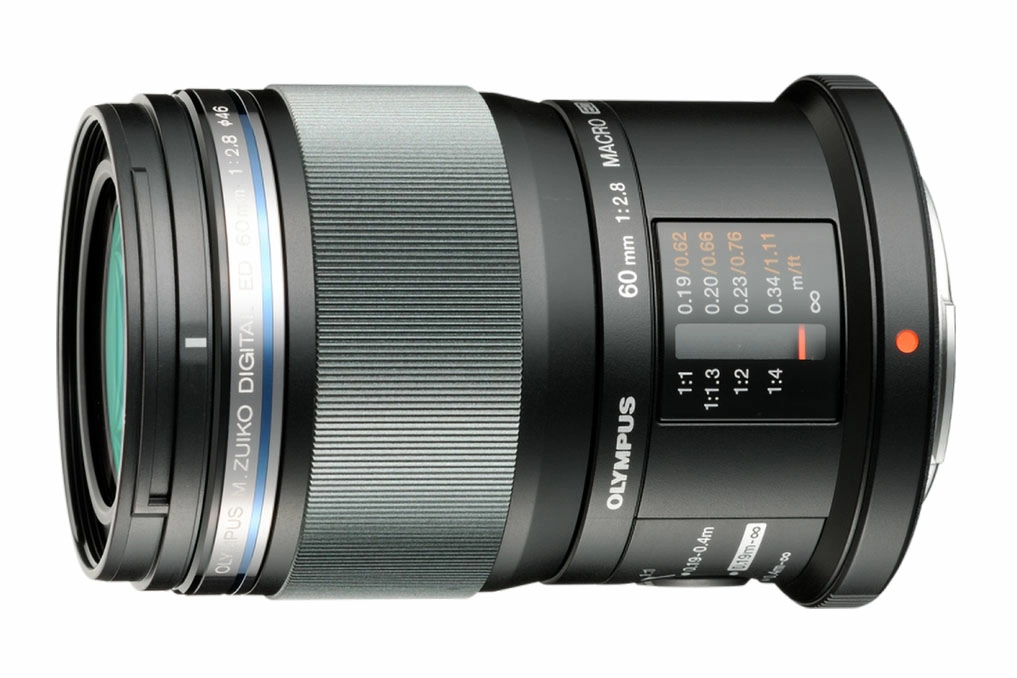
Overall, the Olympus M.Zuiko Digital ED 60mm f/2.8 Macro lens is a high-quality macro lens that offers excellent image quality, versatile focal length, and a compact design. It is particularly suitable for photographers who prioritize macro photography but also value its dual-purpose capabilities for other genres. However, photographers should consider the lens’s slower autofocus, lack of built-in optical image stabilization, and limited maximum aperture when assessing their specific shooting needs.

Macro photography is a fascinating and rewarding pursuit that allows photographers to explore the intricate details of small subjects and capture unique perspectives. While close-up filters and extension tubes can enhance your photography, investing in a dedicated macro lens takes your macro images to a new level.
The lenses mentioned in the descriptions offer excellent options for macro photography, each with its features, advantages, and considerations. The choice ultimately depends on your specific needs, style, and budget. Whether you opt for the Canon EF-S 35mm f/2.8 Macro IS STM, Canon RF 100mm f/2.8L Macro IS USM, Nikon AF-S 40mm f/2.8G Micro, Nikon Z MC 105mm f/2.8 VR S, Sony FE 90mm f/2.8 Macro G OSS, Sigma 105mm f/2.8 DG DN Macro Art, Fujifilm XF 80mm f/2.8 R LM OIS WR, or Olympus M.Zuiko Digital ED 60mm f/2.8 Macro lens, you can expect excellent image quality and performance for your macro photography.
When choosing a macro lens, consider focal length, maximum aperture, image stabilization, autofocus performance, and weather sealing. These lenses are designed to excel in close-up photography but also have versatility for other genres, such as portraits or telephoto shooting.
Remember that if you have the right lens, macro photography can be achieved with any interchangeable lens camera. While phones offer macro modes and attachments, dedicated cameras with macro lenses provide additional capabilities and image quality.
If you’re new to macro photography, be aware that “macro” encompasses a range of close-up photography, and there isn’t a strict definition. Generally, macro photography involves replicating subjects at a 1:1 ratio or capturing sharp images of tiny subjects up close.
While a tripod is unnecessary for macro photography, it can be beneficial, especially when using small apertures, low ISO settings, and longer shutter speeds to achieve optimal image quality. Tripods help in maintaining stability and reducing camera shake.
Lastly, shooting at wide apertures like f/2.8 in macro photography results in an extremely shallow depth of field, which may not be desirable for capturing the entire subject in focus. Many macro photographers prefer smaller apertures and may resort to focus stacking techniques to achieve a larger depth of field.
In the end, the joy of macro photography lies in capturing the intricate beauty of everyday objects and the natural world. Choose a macro lens that suits your style and budget, and enjoy the wonders macro photography offers.
Our website contains affiliate links in our product reviews, where we can earn the affiliate commission. However, our opinions remain independent and impartial.


